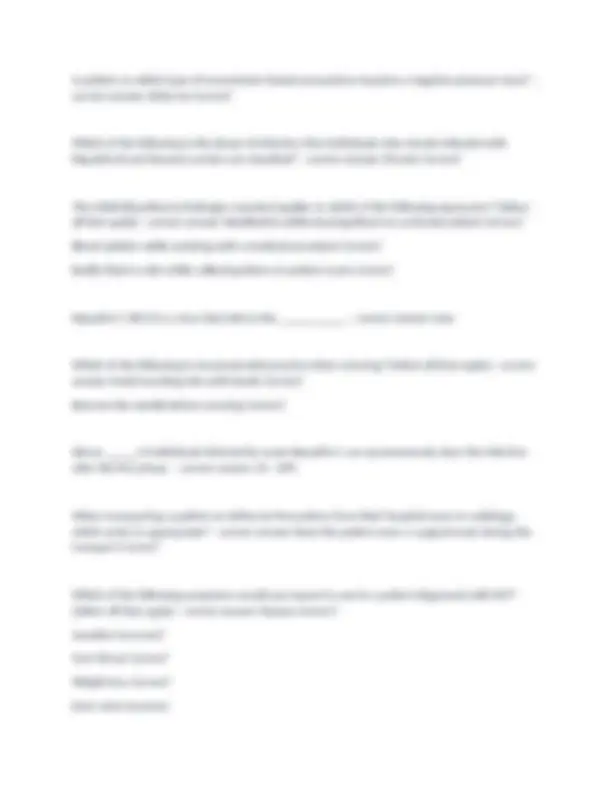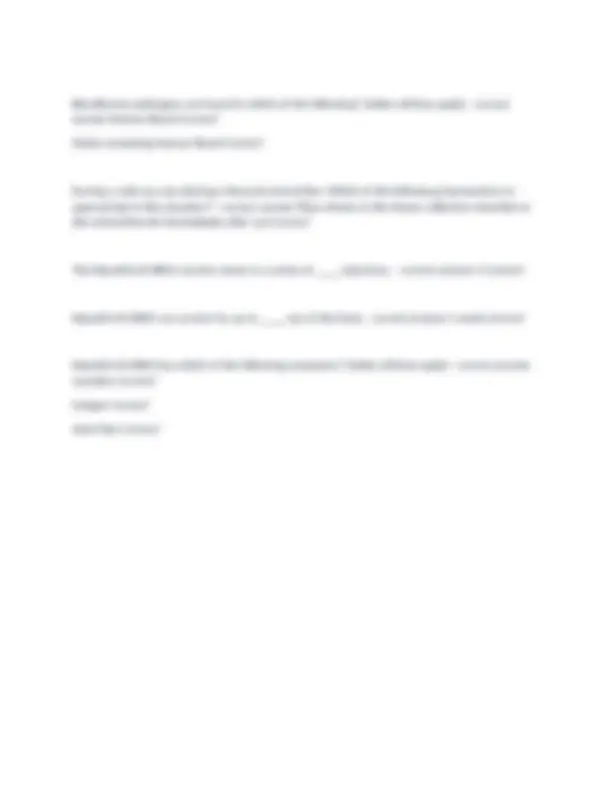




Study with the several resources on Docsity

Earn points by helping other students or get them with a premium plan


Prepare for your exams
Study with the several resources on Docsity

Earn points to download
Earn points by helping other students or get them with a premium plan
Community
Ask the community for help and clear up your study doubts
Discover the best universities in your country according to Docsity users
Free resources
Download our free guides on studying techniques, anxiety management strategies, and thesis advice from Docsity tutors
A comprehensive guide on bloodborne pathogens, focusing on hepatitis b and c, and the safety measures to prevent exposure in healthcare settings. It covers key provisions of the osha bloodborne pathogens standard, symptoms of hepatitis b, best practices for sharps handling, and more. It is essential for healthcare professionals, students, and anyone working in a medical environment to understand these safety protocols.
Typology: Exams
1 / 4

This page cannot be seen from the preview
Don't miss anything!



Hepatitis C (HCV) is a virus that infects the ___________. - correct answer liver Key provisions of the OSHA Bloodborne Pathogens Standard include which of the following? (Select all that apply) - correct answer Identification and usage of personal protective equipment (PPE) Proper biohazard labeling, signage and color coding When an exposure incident to blood or other potentially infectious materials does occur, which step should be implemented immediately? - correct answer *Wash exposed skin with a non- abrasive soap and water 2.Contact the supervisor 3 Obtain the infected person's medical history 4 Use a bleach solution to clean the area of the spill Which of the following are considered bloodborne pathogens? (Select all that apply) Human Immunodeficiency Virus (HIV) Hepatitis B Virus (HBV) Acquired Immunodeficiency Syndrome (AIDS) Cirrhosis - correct answer Human Immunodeficiency Virus (HIV) Hepatitis B Virus (HBV) Hepatitis B (HBV) has which of the following symptoms? (Select all that apply) Jaundice Correct! Fatigue Correct! Headaches Joint Pain Correct!
Increased Hunger - correct answer During a code you are placing a femoral central line. Which of the following interventions is appropriate in this situation? - correct answer 1Designate a person to stand by with a sharps container to place. 2Hand off sharps to another HCP during insertion to have placed in 3Place sharps in the sharps collection chamber in the central line kit immediately after use Correct! 4Keep a count during insertion of needles to ensure you have the proper amount after insertion Which of the following should you avoid when in an area of potential exposure to bloodborne pathogens? (Select all that apply) - correct answer 1Eating Correct! 2Drinking Correct! 3Handwashing 4Gloving Which of the following is considered best practice for the prevention of sharps injuries during suturing? - correct answer Remove the needle from the suture before tying. Correct! Which of the following actions are considered good practice in the work environment to reduce sharps exposures? (Select all that apply) - correct answer Always activate the device Correct! 2Use your non dominant hand to cover a needle with sliding shield 3Know where sharps collection containers are before using sharps Correct! 4Hand off sharps to other Healthcare Provider in high risk situations 5Dispose of sharps immediately after use Correct! Which of the following are forms of Engineering Control? (Select all that apply) - correct answer Disposal containers for sharps Correct! Needles that are self-sheathing Correct! Non-needle sharps Correct! Prohibition of recapping needles by using two hands Incorrect!
Bloodborne pathogens are found in which of the following? (Select all that apply) - correct answer Human blood Correct! Fluids containing human blood Correct! During a code you are placing a femoral central line. Which of the following interventions is appropriate in this situation? - correct answer Place sharps in the sharps collection chamber in the central line kit immediately after use Correct! The Hepatitis B (HBV) vaccine comes in a series of ____ injections. - correct answer 3 Correct! Hepatitis B (HBV) can survive for up to ____ out of the body. - correct answer 1 week Correct! Hepatitis B (HBV) has which of the following symptoms? (Select all that apply) - correct answer Jaundice Correct! Fatigue Correct! Joint Pain Correct!